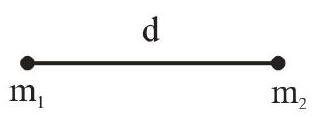138374 A fighter plane, flying horizontally with a speed $360 \mathrm{~km} / \mathrm{h}$ at an altitude of $500 \mathrm{~m}$ drops a bomb for a target straight ahead of it on the ground. The bomb should be dropped at what approximate distance ahead of the target? Assume that acceleration due to gravity (g) is $10 \mathrm{~ms}^{-2}$. Also neglect air drag.
138374 A fighter plane, flying horizontally with a speed $360 \mathrm{~km} / \mathrm{h}$ at an altitude of $500 \mathrm{~m}$ drops a bomb for a target straight ahead of it on the ground. The bomb should be dropped at what approximate distance ahead of the target? Assume that acceleration due to gravity (g) is $10 \mathrm{~ms}^{-2}$. Also neglect air drag.
138374 A fighter plane, flying horizontally with a speed $360 \mathrm{~km} / \mathrm{h}$ at an altitude of $500 \mathrm{~m}$ drops a bomb for a target straight ahead of it on the ground. The bomb should be dropped at what approximate distance ahead of the target? Assume that acceleration due to gravity (g) is $10 \mathrm{~ms}^{-2}$. Also neglect air drag.
138374 A fighter plane, flying horizontally with a speed $360 \mathrm{~km} / \mathrm{h}$ at an altitude of $500 \mathrm{~m}$ drops a bomb for a target straight ahead of it on the ground. The bomb should be dropped at what approximate distance ahead of the target? Assume that acceleration due to gravity (g) is $10 \mathrm{~ms}^{-2}$. Also neglect air drag.


